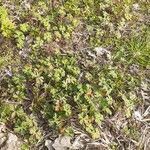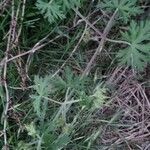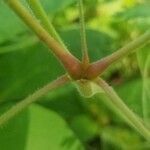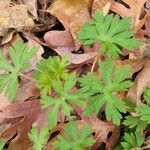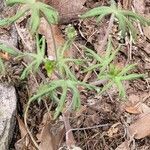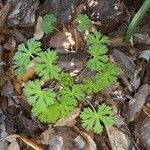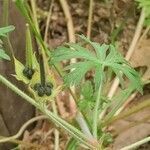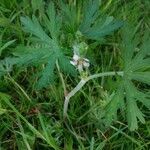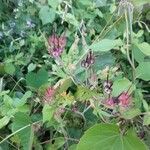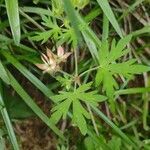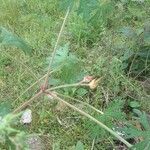Annual; stems several, freely branched, eventually to 6 dm, villous with spreading or somewhat retrorse hairs, and becoming glandular above, lvs rotund-reniform, 3–7 cm wide, deeply 5–9-cleft with oblong to obovate, deeply toothed or lobed segments; peduncles mostly 2-fld, the pedicels to twice as long as the cal; sep to 1 cm, short-awned, equaling the retuse pet; fr 2–5 cm, the stylar beak 1–2 mm, the carpel-bodies hirsute with long antrorse hairs ca 1 mm; seeds very obscurely reticulate; 2n=52. Dry, barren or sandy soil and waste places; Me. to B.C., s. to Fla., Tex., and Calif. May–Aug. Var. carolinianum, chiefly southern, but extending n. to Mass. and Mich., has a relatively loose and open infl; var. confertiflorum Fernald, the common form in our range, has very short upper internodes, the fls thus in compact, many-fld, umbel-like terminal clusters. (G. sphaerospermum Fernald, plants with seeds of maximum plumpness and sep of maximum width—an unusual combination)
